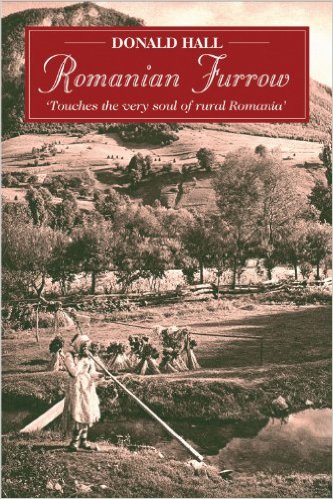I’ve updated the books page on this site with two new entries on the non-fiction page and an interloping entry on the fiction page. If you’re coming to Transylvania, or have been here, and want to read more, here are some cracking books to buy or borrow. Here’s the non-fiction page to start with.
Tag Archives: books about Transylvania
Launch date for my new book
 Put the date in your diary! Gaudeamus Book Fair at Romexpo, Bucharest: Saturday 19 November, at 5pm (1700 hrs) is the moment when my new book is launched on the world. Come and join us! We have one or two lovely surprises for the launch itself, and of course I’ll be there all day to sign your copies (one for you, lots more for Christmas presents…). Meet some of the people from the book and sample a taste of Magura’s English corner.
Put the date in your diary! Gaudeamus Book Fair at Romexpo, Bucharest: Saturday 19 November, at 5pm (1700 hrs) is the moment when my new book is launched on the world. Come and join us! We have one or two lovely surprises for the launch itself, and of course I’ll be there all day to sign your copies (one for you, lots more for Christmas presents…). Meet some of the people from the book and sample a taste of Magura’s English corner.
The book is available from the start of Gaudeamus, which runs from 16-20 November, so if you can’t get there on the Saturday, don’t worry – the book will be waiting for you. I’m looking forward to seeing you there.
A charming new-old book
The latest of my finds, The Romanian Furrow is Donald Hall’s delightful tale of life and work among peasant families in Transylvania. Written in 1933, at about the same that Patrick Leigh-Fermor was tramping amongst the castles and manor houses of the Carpathians, Hall was working in the fields alongside his hosts, living a thousand-year-old tradition of the seasons and the cycle of natural life. The book deserves to be better known – and is not entirely an echo of a forgotten tradition: even in Magura much of the seasonal cycle still rules families and village life. Attitudes and values remain much the same as they were 83 years ago. The perfect read for travellers who might be Transylvania-bound. Read more…

Cover of The Romanian Furrow, by Donald Hall (1933)
Enthusiastic response to Banffy’s trilogy
Happy New Year to you all! If you don’t already live here, I hope we’ll see you in Magura during 2013.
Blogger and Magura blog follower Susan has just finished Banffy’s Transylvanian trilogy, and posted an excellent review as a comment to the post before this. It deserves a post of its own, so as 2013’s first entry, here it is.
“While the books are frequently referred to as Bánffy’s Transylvanian Trilogy,” the book describes a Transylvania that was still part of Hungary, not Romania, in the decade before the outbreak of World War I. The main character (Abady), like Bánffy, is a Hungarian aristocrat, and much of the story takes place in Budapest. But regardless of the character’s – or author’s – nationality, there’s no doubting their love for Transylvania. Its forests and lands seem as dear to Abady as his lover, and Bánffy lovingly describes them in all four seasons. And even as a Hungarian, Bánffy – through Abady – argues for Transylvania’s unique needs, customs, and resources.
One disadvantage of the time frame of the novels is that the Transylvanian place names in the book are no longer in common usage, reflecting the older, Hungarian labels. Kolozsvár is clearly Cluj-Napoca, but I had problems with the other names. (Is Brasso Braşov?) I would love a future edition to include a map indicating both Hungarian and Romanian names. The Abady seat is near Kolozsvár, so I gather that most of the action takes place in northern Transylvania rather than the southern area that most western tourists associate with Transylvania.
As might be expected of a trilogy, the scope of the novels is huge. But, in composing his elegy for Hungarian Transylvania, Bánffy lays bare the jewels and faults of his society with the skill of a miniaturist. Duelling customs, ball protocols, forest management practices, are all described in detail, yet all feel an integral part of the story, never falsely introduced just to convey information. Perhaps Bánffy’s most astonishing feat in this regard are the long passages relating the Parliamentary dysfunction of the time, pages and pages of information that somehow never feel didactic. I devoured them, a history lesson wrapped up in an epic novel. (Bánffy even manages a brief reference to himself as actor rather than author.) In fact, the political side of the novels gripped me more than the central love story, but that says as much about my temperament as Bánffy’s storytelling.
I don’t want to relate too much for fear of giving something away (I tend to detest many recent reviews for that reason), but I would unreservedly recommend this book to anyone: those looking for a fuller understanding of Transylvania’s rich complexities or Eastern Europe’s dysfunction and misfortune leading up to World I, those looking for a heart-breaking story of human decency and blindness, or those simply looking for a rollicking good read.”


